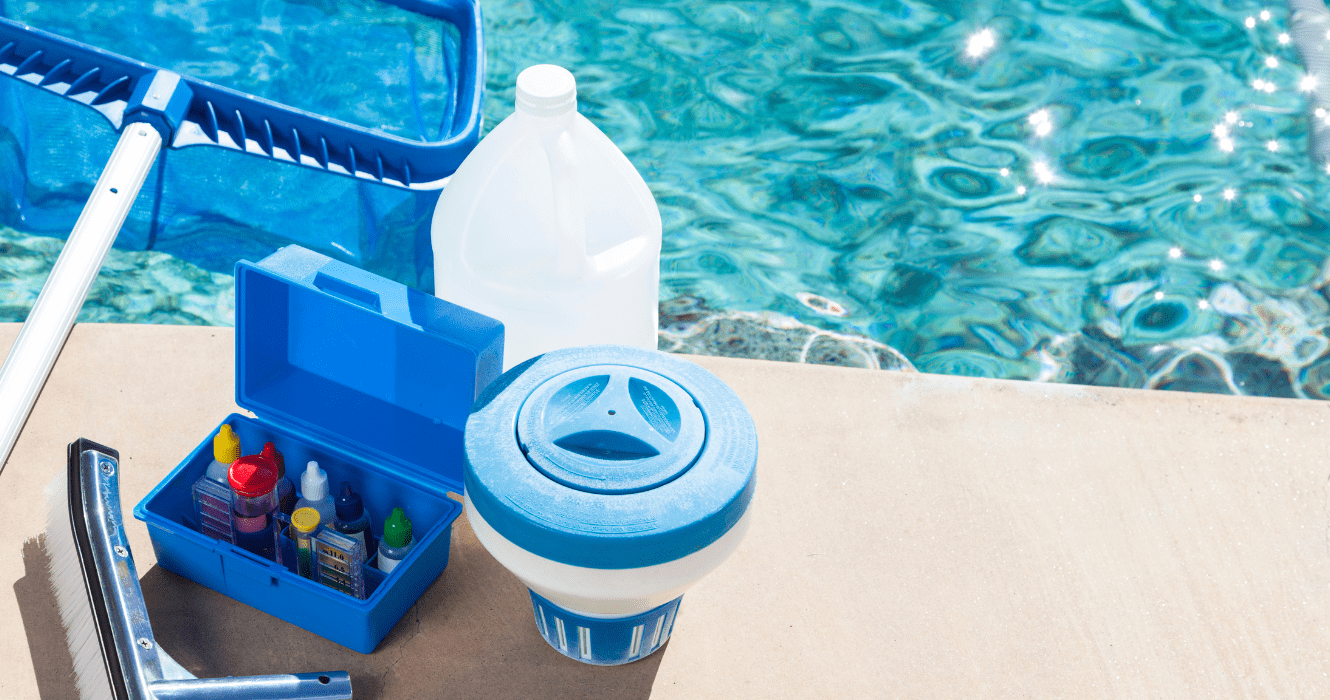
Are the colder months around the corner, and your in-ground pool is still open? Closing your in-ground pool for the winter season can seem like a daunting task, but it doesn’t have to be! Discover what to expect when closing an in-ground pool, the best time to close it for the season, and the supplies you’ll need so you can close your pool correctly to protect against the cold months.
When To Close Your In-Ground Pool
The time of year you decide to close your pool is an important way to ensure you’re not too late in starting the process. Popular months to close an in-ground pool include September and October, right around when the school season starts and the leaves start to fall. However, with warmer weather in the Fall during recent years, we recommend closing based on water temperature. When the pool water temperature is consistently 65 degrees Fahrenheit or lower, you’re safe to close your pool. It’s also important to avoid closing your pool too soon, as warm weather can increase your risk for algae growth, which will create more work when you open your pool in the spring.
Are you leaving town and won’t be home for an extended period? Closing your in-ground pool temporarily is a good idea to protect your pool while you’re gone. Or, you can also look into pool maintenance services to have someone keep an eye on your pool until you get back.
Why Do You Need to Close Your In-Ground Pool?
Closing your in-ground pool for the winter is important for the long-term protection of the pool, and saves your energy while reducing additional maintenance in the future. When closing your pool due to the expectancy of a colder season, winterizing your in-ground pool is crucial to shield against plumbing damage and other pool components that can be affected by cold weather. By preparing for the freezing temperatures, you can effectively protect your pool from serious damage, saving you maintenance and repair costs in the long run.
Steps To Take Before Closing An In-Ground Pool
Closing an in-ground pool takes time, and taking certain steps ensures that the process is done efficiently and correctly the first time to avoid damage.
- Repair all leaks. Repairing any existing leaks before winterizing your in-ground pool is important to ensure there is no damage done to your pool.
- Brush, vacuum, and clean. Start with a clean base of your pool and clean the waterline and all pool surfaces to prevent discoloring, as well as any excess dirt and debris.
- Balance the water chemistry. Do this 1 week before winterizing your in-ground pool to prevent liner damage and protect your pool during the winter months. This is done in advance so that water can be re-tested after balancers are added to ensure pH, Alkalinity and Calcium Hardness are at the proper levels.
Supplies Needed to Close an In-Ground Pool
Before you start winterizing your in-ground pool, make sure you have the following essential items on hand:
- Safety Cover
- BioGuard® Arctic Blue® Shock
- BioGuard®Algae Protector
- BioGuard Pool Closing Complete
- Gizzmo
- Winter Plugs
- SaltScapes Cell Cleaner
- BioGuard Stow-Away®
- Pool Line Blower
These chemicals and tools are crucial to the closing process. Shocking the pool with chlorine and algae removal products can also kill remaining bacteria and prevent algae from growing during the off-season. Once you’re equipped with supplies, review the simplified breakdown below of closing an in-ground pool:
- Add Zager’s Winter kit to the pool (this includes BioGuard® Arctic Blue® Shock, BioGuard® Algae Protector, and BioGuard Pool Closing Complete). Let the chemicals circulate for 24 hrs if possible.
- Remove pool accessories and store them in a separate area.
- Lower water level below the skimmer.
- Drain the filter, pump, chlorinator, and heater by removing the drain plugs.
- Blow out pool lines. (Blowing out the lines and equipment on an in-ground pool can be tricky and costly if done incorrectly. We recommend using a professional service like Zagers’ Service Department to ensure your plumbing and equipment are protected.
- Install the Gizzmo device and winter plugs.
- If you have a salt pool: Clean your salt cell with BioGuard® Salt Cell Cleaner. Follow the instructions on the bottle.
- Clean solar cover with BioGuard® Stow-away.
- Protect pool chemicals by storing them in a cool, dry place that is not prone to freezing.
These simple steps ensure you are on the right track to closing your pool properly for the winter season and protecting it from the cold weather elements. For more in-depth details and instructions, read Zagers In-Ground Pool Closing Instructions to confirm your steps are accurate and done correctly.
Close Your In-Ground Pool With Zagers
The fall season is a busy time, and closing a pool can be an overwhelming process. Avoid the extra time and energy by enlisting the help of our experts. Contact Zagers Pool & Spa for pool closing services so we can do the hard work for you. Relieve yourself from the stress and leave it to the professionals by filling out a pool closing request form.